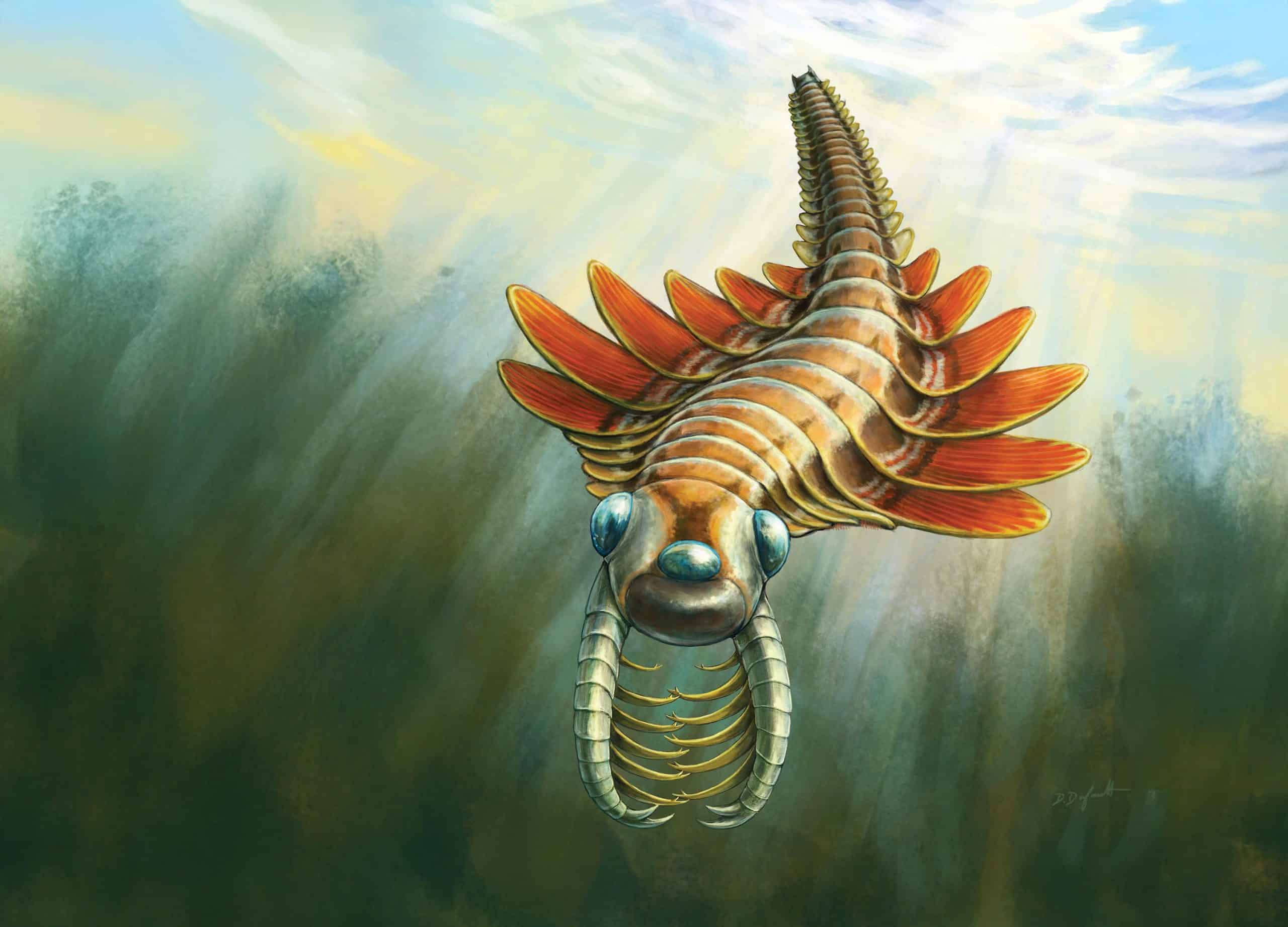Scientists Uncover Three-Eyed Sea Moth from 500 Million Years Ago

Scientists have made a remarkable discovery in Canada, unearthing a half-million-year-old species known as Mosura fentoni, a three-eyed “sea moth.” This tiny predator, measuring only a few inches long, is believed to have thrived in ancient oceans, using its unique adaptations to hunt for prey. Named after the fictional monster Mothra, this species sheds light on the evolutionary history and diversity of early arthropods, offering insights into their adaptations and ecological roles.
About the Species
The newly identified Mosura fentoni belongs to a group of ancient arthropods called radiodonts. According to paleontologists Joseph Moysiuk and Jean-Bernard Caron, this species stands out due to its remarkable anatomical features. Unlike other early arthropods, M. fentoni boasts up to 26 trunk segments, the highest number recorded for any radiodont, despite being one of the smallest known.
Additionally, this species possesses the longest gills relative to its body size among all known radiodonts. These gills, located at the rear, likely served a specialized function for respiration. Similar respiratory systems have evolved in modern arthropods like horseshoe crabs and wood lice. While the exact reason for the long gills remains uncertain, researchers speculate that they may have been adaptations for low-oxygen environments or for an active predatory lifestyle.
Another intriguing feature of Mosura fentoni is its third eye. Although paleontologists are still investigating its purpose, it is believed that this median eye may have helped the creature detect light and navigate its surroundings during high-speed hunts, as suggested by experts at the U.K. Natural History Museum.
Key Insights
Arthropods represent a vast group of invertebrates characterized by their hard exoskeletons, segmented bodies, and jointed legs. Today, they comprise approximately three-quarters of all living animal species, including insects, arachnids, and crustaceans. Their evolutionary success can be attributed to their specialized body segments, which allow for diverse adaptations.
Radiodonts are considered one of the earliest branches of arthropods on the evolutionary tree, providing crucial insights into the ancestral traits of this extensive group. The discovery of Mosura fentoni highlights the surprising diversity and adaptability of these early arthropods, suggesting that they were already evolving in ways similar to their modern descendants. This finding emphasizes the complexity of ancient ecosystems and the evolutionary pathways that have shaped the arthropod lineage over millions of years.
As researchers continue to study these ancient creatures, they hope to uncover more about the ecological roles and evolutionary strategies of early arthropods, further enriching our understanding of life’s history on Earth.
Observer Voice is the one stop site for National, International news, Sports, Editor’s Choice, Art/culture contents, Quotes and much more. We also cover historical contents. Historical contents includes World History, Indian History, and what happened today. The website also covers Entertainment across the India and World.

